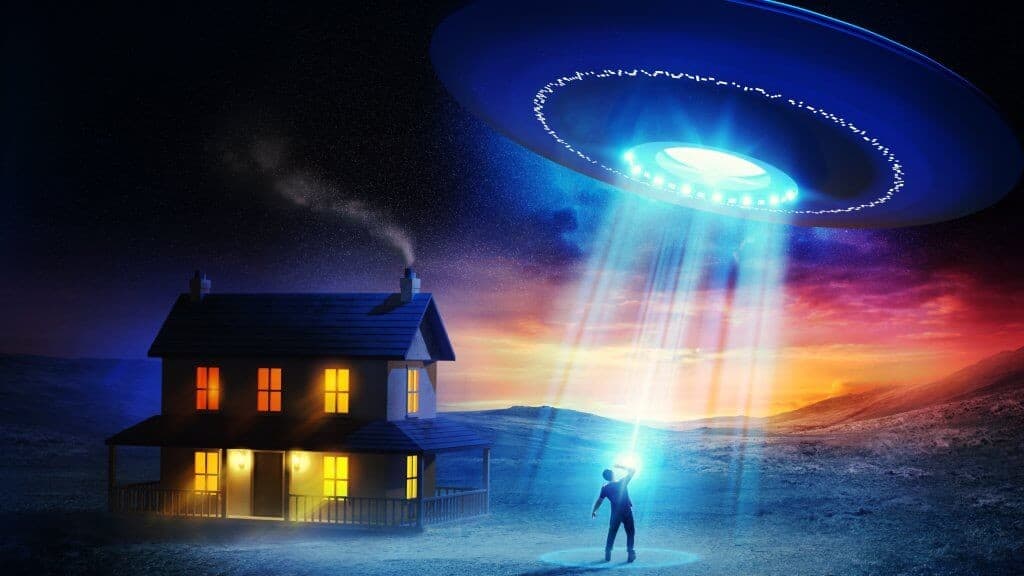Amnesia or Lost Time
A key aspect is amnesia or “lost time,” a term coined in the eighties by researcher Budd Hopkins.
This amnesia often prevents those affected from recalling the critical details of the incident. To date, the only effective tool to transcend this barrier has been hypnotic regression, which allows the individual to access memories blocked by trauma, gradually emerging in a state of deep relaxation.
It’s common for those who have undergone an abduction to remember how it all began: perhaps with an intense light blocking their path on a nocturnal route, or a star plummeting and transforming into an unidentified flying object in a nearby field. They may experience the paralysis of their vehicle’s electrical systems, or an inexplicable lapse of time, among other revealing signs.
When these details come to the attention of a researcher, who suggests and conducts a hypnosis session, the possibility of adding a new episode to the abduction record opens up. Thanks to hypnotic regression, notable figures such as doctors Leo Sprinkle, Berthold Schwarz, and the engineer and hypnotherapist James Harder, have been able to document hundreds of such incidents.
Harder, in particular, analyzed 104 cases, with a distribution among men, children accompanied by adults, workers of various levels, and university students, suggesting a general profile of high training or educational level.
Consistency in Testimonies
What strikes me about these stories is their cohesion and the similarities they share. John Rimmer, based on well-founded cases, managed to outline an “abduction model.”
Victims, of both sexes but mostly men, are healthy individuals, of normal mentality and without a prior interest in the UFO phenomenon. Later, we will delve into their physical and psychological characteristics.
This “model” indicates that abductions usually occur at night, in remote places like secondary roads, significantly affecting drivers. The presence of an overwhelming light or, sometimes, the ship itself, is followed by the appearance of small, big-headed beings who, neutralizing the witness’s will, lead them aboard their “ship.”
Within this ship, the abductee notices a uniform lighting of uncertain origin, and a control room filled with consoles and strangely designed seats, where humanoids identical to the captors manipulate luminous controls and other devices.
The Appearance of Screens
Abductees often report the presence of screens reminiscent of current television monitors. Soon, the person is moved to an adjacent room with an atmosphere similar to that of an operating room, equipped with white walls and an operating table at the center. In this space, the abductee is undressed and subjected to a series of procedures resembling a detailed medical examination.
These procedures are performed by humanoids, although several accounts mention the involvement of beings who seem subordinate to others of taller stature and more human appearance.
Various instruments are used to perform tests on the abductee, including the extraction of samples of blood, semen, hair, and skin. In the case of women, examinations reminiscent of gynecological ones are reported, such as the insertion of a long needle through the navel, a technique reminiscent of Betty Hill’s narrative in “The Interrupted Journey” (1966), anticipating a medical practice that would not develop until years later.
Object Implantation
Furthermore, the implantation of objects or devices in places such as the nape of the neck or under the scalp of the abductee is mentioned. Despite attempts to find these implants, any concrete evidence has rarely been presented.
A particularly baffling case was reported on September 25, 1986, by the journal “Nature,” where members of the Department of Genetics at the Winston Churchill Hospital in Oxford requested assistance to identify a strange object, resembling a crossword puzzle, found during chromosomal analysis of a patient.
This implant remains an enigma for the scientific community, with no clear explanation to date.
William Hermann and Abductions
William Hermann, an American citizen who recounts in “UFO Contact from Reticulum” (1981) being abducted several times by small beings with disproportionately large heads, describes the space where the medical procedures were performed as “indoctrination chambers.”
This term suggests that the purpose of abductions could be to implant instructions undetectable even under deep hypnosis.
During hypnotic regression, it has been observed that when addressing these moments, the abductee’s heart rate spikes, risking their well-being, which was verified in the case of the Spaniard Julio F., abducted near Medinaceli (Soria) in 1978. This increase in heart rate, noted by researcher and psychologist Germán de Argumosa, lends credibility to the phenomenon, dismissing the possibility of fraud.
Abductee Profile
The profile of those who have experienced abductions is notably specific: they tend to be young, healthy, with above-average intelligence, and no psychopathological history.
Interestingly, there is no requirement for a high cultural level, including people of various occupations such as farmers, truck drivers, and homemakers, many of whom had no prior interest or knowledge about UFOs or abductions.
The absence of abductions among scientists, high-ranking military personnel, religious leaders, or politicians suggests a particular interest in “chemically pure” individuals, without preconditions or knowledge that could be considered superfluous to the supposed abductors.
Notable Abduction Cases
Among the documented cases, no abductions of public figures or highly specialized professionals are reported, pointing to a preference for subjects with a more general profile and potentially more influenceable.
A unique case, reported by Ornar Fowler in “Flying Saucer Review” in December 1983, involves a seventy-seven-year-old man invited aboard a “flying saucer” by two humanoids.
This incident stands out for the age of the abductee, contradicting the trend of selecting younger individuals, which could indicate an exception to the rule or an exploration of new possibilities by the visitors…





